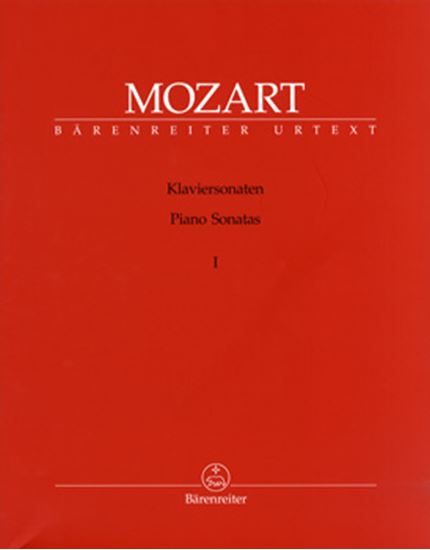Mozart, Wolfgang Amadeus : Sonate für Klavier Nr.2 Mov.3 Presto
Work Overview
Genre:sonata
Total Playing Time:5 min 00 sec
Copyright:Public Domain
Commentary (2)
Author : Kumamoto, Ryohei
Last Updated: February 28, 2025
[Open]
Author : Kumamoto, Ryohei
Sonata Form
- Exposition: [Presentation of First Theme (measures 1-16) → Transition (measures 17-37) → Presentation of Second Theme (measures 38-57) → Closing Section (measures 58-71) → Coda (measures 72-77)]
- Development: [Development of Second Theme (measures 78-97) → Transition (measures 98-106)]
- Recapitulation: [Recapitulation of First Theme (measures 107-123) → Transition (measures 124-148) → Second Theme (measures 149-168) → Closing Section (measures 169-182) → Coda (measures 183-190)]
The main key is F major. Both the first and second themes exhibit a two-part structure, each with two distinct characteristics. In the first theme, the first half displays rhythmic motion with disjunct progression, including staccato and eighth-note rests, while the second half features a denser, smoother melodic contour through chromatic and stepwise motion. This two-part structure is also observed in the second theme; the first half presents a monophonic melodic line, whereas the second half introduces a rhythmic accompanying figure in the bass, expressing a difference in character.
Given these thematic characteristics, the development centered around these themes is rich in variation and conveys a sense of fluidity. However, simultaneously, the sharing and development of motifs provide a sense of unity and a robust structure. For instance, the transition from the first theme to the second theme also has a two-part structure, similar to the themes themselves, where a motif introduced in the bass in the first half becomes prominent in the second half.
While the harmonic identification of the first half of the second theme poses a challenge, in this case, it is identified as a dominant ninth chord because an identical phrase in the development section is a dominant ninth chord. Although a subdominant IV is also a possibility, if identical phrases are developed before and after, their harmonic progression is generally considered to be consistent unless significant changes are observed in the phrase.
Interestingly, in the latter half of the recapitulation's transition (measures 143-149), while the lower voice suggests a double dominant → dominant harmonic progression, the upper voice shows a I second inversion → dominant progression, indicating different harmonic progressions in the upper and lower voices. This is likely a result of Mozart's unique interpretation and expression of polyphony.
The development section features a transformed version of the second theme; after being imitated from G minor to F major, partial motifs are developed through sequence, followed by a transitional passage leading to a half cadence. While the first and second themes were meticulously developed in the exposition, the development section is quite compactly structured in this manner.
Consequently, this is a sonata form with a relatively small proportion dedicated to the development section.
The recapitulation, despite minor differences, is considered to have the same structure as the exposition, except for being presented in the tonic key.
Author : Ooi, Kazurou
Last Updated: July 21, 2025
[Open]
Author : Ooi, Kazurou
Upon checking the Henle edition owned by the author and several scores uploaded online, it was found that this third movement contains only two types of dynamic markings: piano (p) and forte (F).
This piece clearly has an instrumental character, and it might be helpful to imagine it as a string quartet. The issue then arises with these two types of dynamic markings, forte and piano. To state the conclusion first, there are many variations within these two dynamic levels. That is to say, even when forte is indicated, there are various levels of forte in terms of volume. Therefore, one should avoid producing the same volume of forte simply because it is marked forte. The exact same principle applies to piano.
The question then becomes how to determine these dynamic differences. Regarding piano, for instance, the piano in measures 78-81 and the piano in measures 86-89 should be differentiated, as both the pitch and harmony change. For piano markings that appear suddenly, such as those seen on the second beat of measures 55 and 57, it is appropriate to interpret them as requiring only a slight reduction in force.
The issue lies with forte. One approach is to focus on the left-hand octaves; in measures where left-hand octaves appear, such as measures 13-14 and 55-58, a relatively large forte would be appropriate.
In this third movement, consider the overall flow from a broad perspective. For example, looking at measures 1-77, the movement begins piano and ends forte. However, observing the flow within this section, the first half of measures 1-77 contains many rests and fewer sixteenth notes, whereas in the latter half, the number of rests decreases and the number of sixteenth notes increases. This implies that the tension builds as the piece progresses towards the latter half. Consequently, the intention is to conclude grandly with a forte. Grasping this, when reaching the latter half, even the forte should have a greater volume than the forte in the first half, thereby increasing the tension.
With this approach, examine the remaining measures, grasp their direction, and control the dynamics accordingly.
PTNA & Partner Channel Videos(3items)
Sheet Music
Scores List (9)

(株)全音楽譜出版社

(株)全音楽譜出版社

(株)全音楽譜出版社

(株)音楽之友社

(株)全音楽譜出版社

ヘンレ社(ヤマハ)

(株)音楽之友社






